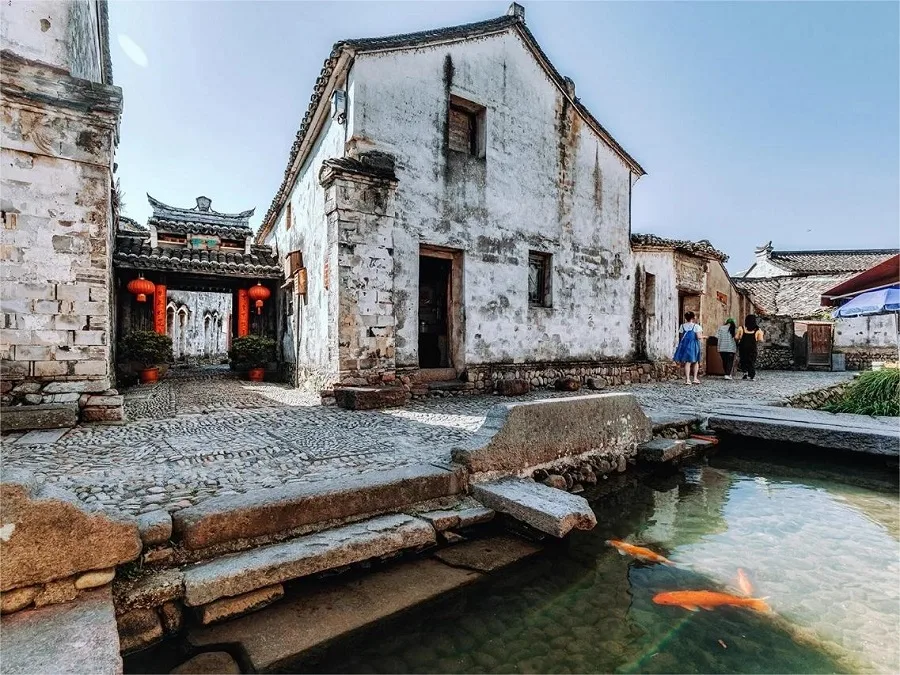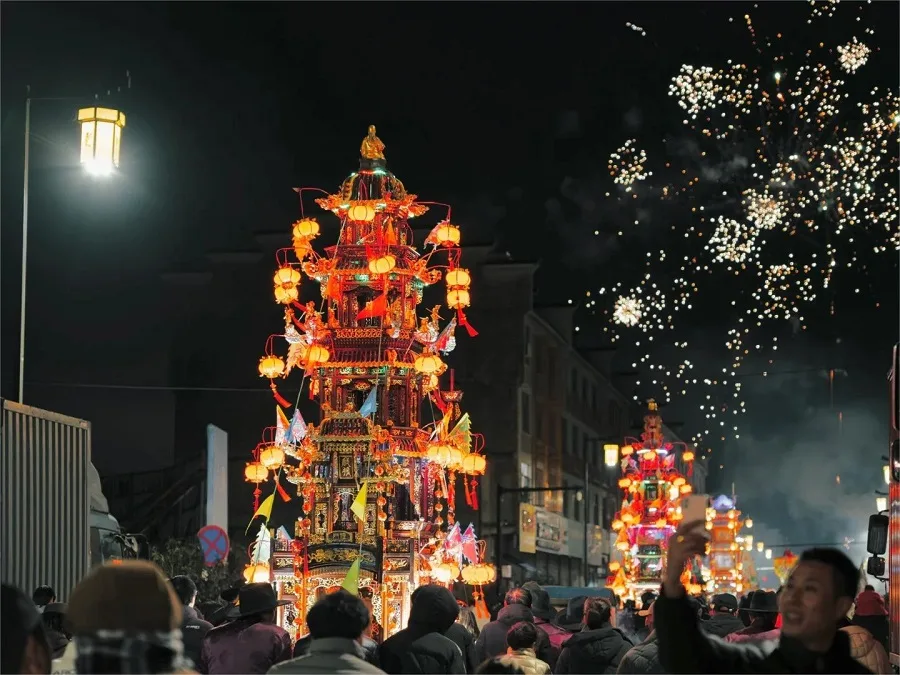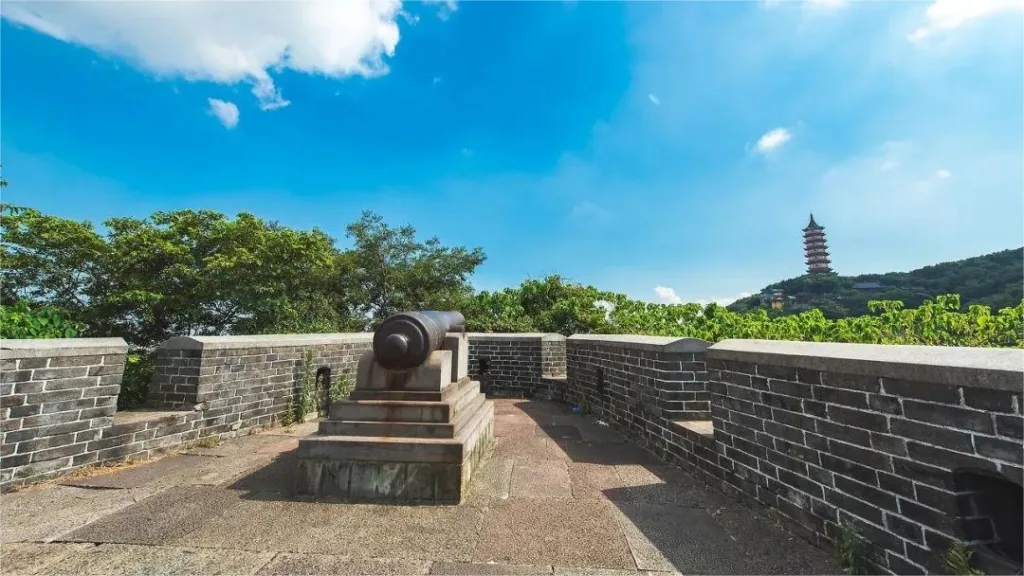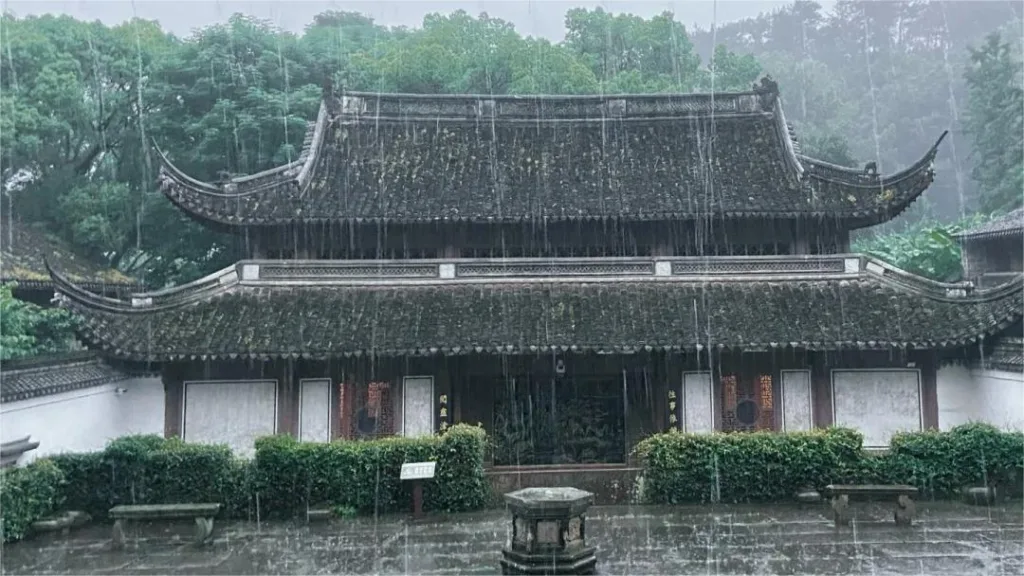Qiantong Ancient Town (前童古镇) stands as one of the most culturally rich towns in eastern Zhejiang Province, preserving a heritage deeply rooted in Confucian culture. The local Tong family settled here during the Southern Song Dynasty, displaying diligence in agriculture and education. In the early Ming Dynasty, Tong Bolin invited the renowned Confucian scholar Fang Xiaoru to lecture at the Shijing Academy twice, laying the foundation for the town’s reputation as a center for literary and ritual studies.
Since then, Qiantong has upheld virtues such as environmental conservation through water management and tree planting, fostering harmony through education and farming, leading to the emergence of generations of talented individuals. Visitors can explore well-preserved ancient residences, old streets, folk museums, Lushan Mountain, Shijing Mountain, Xiaonv Lake, Cha Wan Ying Cypress, and Xu Xiake Ancient Trail.
After a day of sightseeing, visitors can indulge in the delectable local cuisine. Many locals set up stalls along the streets, offering delicacies like the “Three Treasures of Qiantong” (Tong tofu, Qiantong dried tofu, and Qiantong hollow tofu), known for their exquisite taste. Other must-try dishes include soup dumplings, wheat porridge buns, wheat cakes, and sesame seed cakes, all of which offer unique flavors at affordable prices.
Table of Contents
- Basic Information
- Location and Transportation
- Highlights of Qiantong Ancient Town
- Vlog about Qiantong Ancient Town
- Other Attractions in Ningbo Suburbs
Basic Information
| Estimated Length of Tour | 3 hours |
| Ticket Price | 60 RMB |
| Opening Hours | 8.00 – 17.00; Last admission: 16.30 (1st March – 31st August) 8.00 – 16.30; Last admission: 16.00( 1st September – 28th February) |
| Telephone Number | 0086-0574-65370300 0086-0574-89521272 |
Location and Transportation
Qiantong Ancient Town is located approximately 14 kilometers southwest of Ninghai County in Ningbo City, Zhejiang Province, China. To reach Qiantong Ancient Town, tourists can first take a high-speed train to Ningbo Ninghai Station (宁波宁海站). From there, you have two options: taking a taxi, which costs around 40 yuan, or taking a rural bus for 4 yuan. Upon exiting the station, visitors can find the “火车站” bus stop on the right-hand side about 20 meters away. Look for Bus Route 628, which runs every 20-30 minutes, with a travel time of approximately half an hour to reach Qiantong Ancient Town.
Highlights of Qiantong Ancient Town
Ancient Architecture

Compared to some well-known ancient towns, Qiantong remains an undeveloped village, less affected by commercialization and thus better preserving its local customs and traditions. The grand ancestral hall is adorned with intricate carvings on beams, lintels, and windows, showcasing a unique regional style. The majestic horse-head walls and ridges are symbols of the wealth and power of ancient Jiangnan aristocrats, with the number of layers indicating their rank and status. The walls feature carved stone windows, relief inscriptions, and soaring fish and dragons at the peaks. Two movable lion sculptures guard the door pillars, while pairs of ceramic basins adorned with dancing bats symbolize prosperity. Built in the 18th year of the Ming Hongwu era, the ancestral hall boasts 32 large round columns, resembling chess pieces and embodying the idea of a strategic game.
Lantern Festival

Since the mid-Ming Dynasty, festivities erupt throughout the streets and alleys of Qiantong after the 11th day of the lunar new year. Villagers from nearby villages such as Zhaxia and Xiaye gather with drums and gongs, creating a lively atmosphere that reverberates across the countryside. This celebration commemorates their ancestor, Tong Hao, affectionately known as “Old Master Hao.” In ancient times, Qiantong suffered from poor water conditions, and agricultural success depended on timely rainfall. Tong Hao took the lead in organizing efforts to divert water from the Baixi River, leading to the creation of the town’s intricate waterways. Villagers formed small groups to maintain these channels, a tradition that continues today. The Lantern Festival, honoring Tong Hao’s contributions, has endured through the generations.
Lianghuang Temple

Originally a Taoist site where Ge Hong practiced alchemy, Lianghuang Temple later transformed into a Buddhist monastery. During the chaotic period of the Southern and Northern Dynasties, Emperor Liang Xiao (King of Yueyang) sought refuge in what is now known as “Shaochang Temple.” He spent his days there chanting sutras, practicing martial arts, and studying literature alongside the monks. Legend has it that Emperor Xiao and his consort were devout Buddhists. Touched by their sincerity, the heavens bestowed upon them a celestial book, which they affixed to the cliffs of Lianghuang Mountain. Every day, as the king visited his beloved consort at Lianghuang Temple, he passed by the rock with the celestial book. He would read it once on his way up and once again on his way down, quickly mastering its contents. One day, the once dull Liang Rock suddenly emitted a bright light, illuminating dozens of nearby villages. The usually silent Golden Bell Rock began resonating with the sound of bells echoing throughout the valley. Simultaneously, a crack formed in the rock formation in front of Lianghuang Temple, resembling a door. Recognizing this as a sign to leave, the astute Emperor Xiao bid farewell to the monks, his consort, and his old ministers, returning to the capital where he eventually became Emperor Liang.




